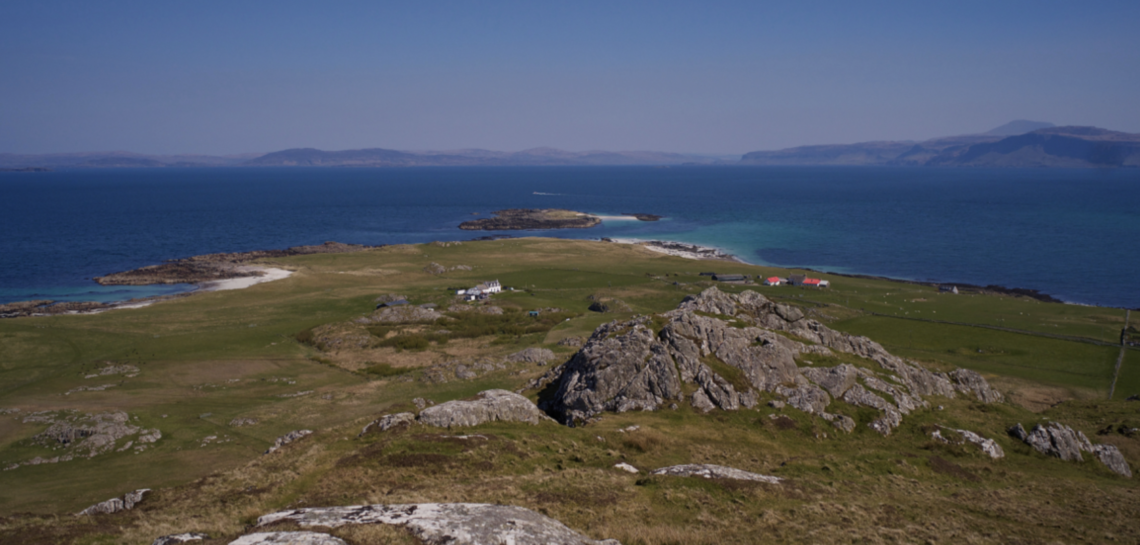
Iona: Dun I and the Well of Eternal Youth
When you get off the ferry on Iona, you can’t help feeling a quiet sense of euphoria. There is something blissful and other-worldly about this tiny island. We experience it every time we go, and I know that countless other people feel it too. Maybe the centuries of worship and meditation have left an invisible imprint of utter serenity. Maybe it exists in a parallel universe. I just don’t know.
Anyway, on a cloudless morning towards the end of April we walked up the main street and past the ruins of the Nunnery, whose mellow pink walls were festooned with ivy-leaved toadflax. It’s impossible to hurry here – time seems irrelevant – so we lingered for a while, watching linnets flitting about the stonework.
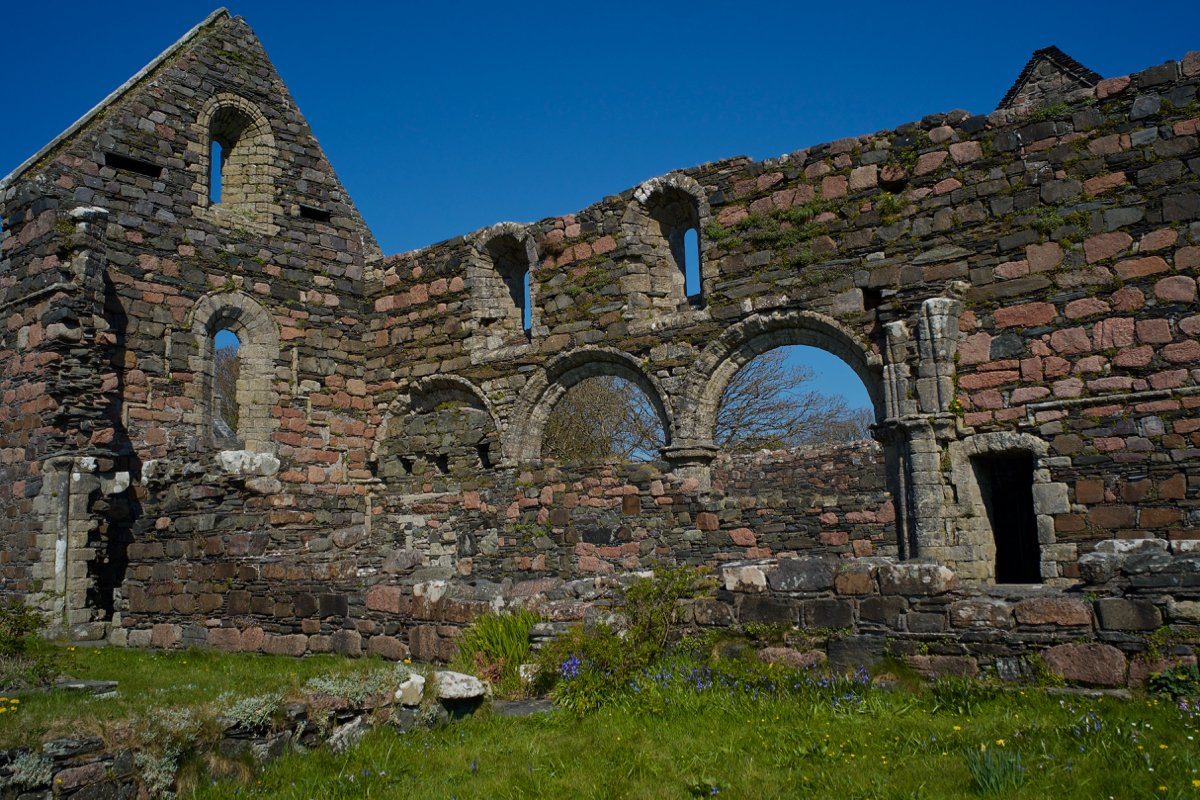
The path to the north end leads past the hotel and its gardens, carefully tended as always, and then on to the Abbey. I couldn’t resist a detour to look at St Oran’s Chapel and graveyard (Reilig Odhrain), where the earliest kings of Scotland are buried. Their bodies would have been transported here in solemn procession, some possibly taking the half-forgotten Road of the Kings down Glen Lonan; then, at the Rock of the Dead (Carraig na Marbh) on Loch Feochan, the king’s body was transferred to a boat and sailed across to Mull. Once on Iona, the final, most sacred stretch of the journey followed the ancient Street of the Dead.
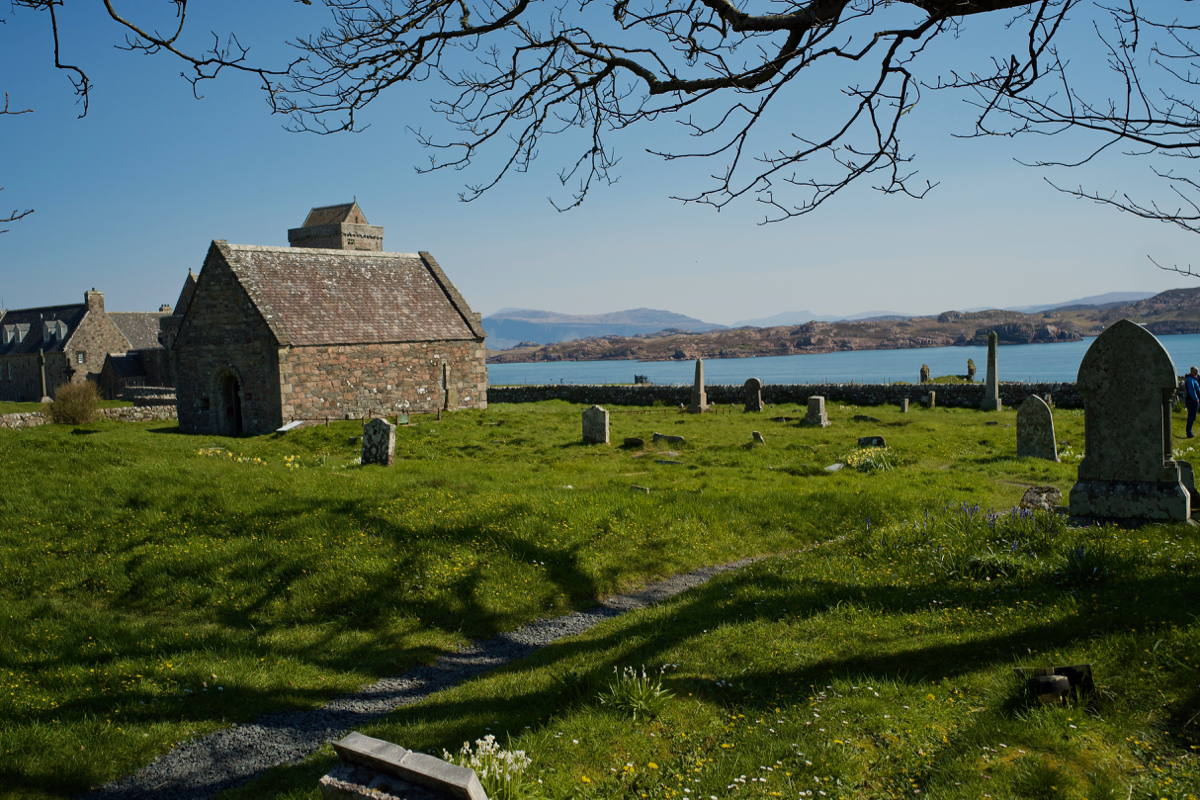
We were heading for Dun I, which is the highest hill on Iona. (I, the old name for Iona, is pronounced ‘ee’). The walk up to its summit reminded me slightly of the climb up Dunadd, the hill in Kilmartin Glen where the kings of Dalriada were inaugurated. There’s a similar sense of spaciousness, giving the illusion that it’s higher than it actually is. After a brief and slightly muddy scramble we were at the top, gazing in awe at the panorama that stretches away on all sides.
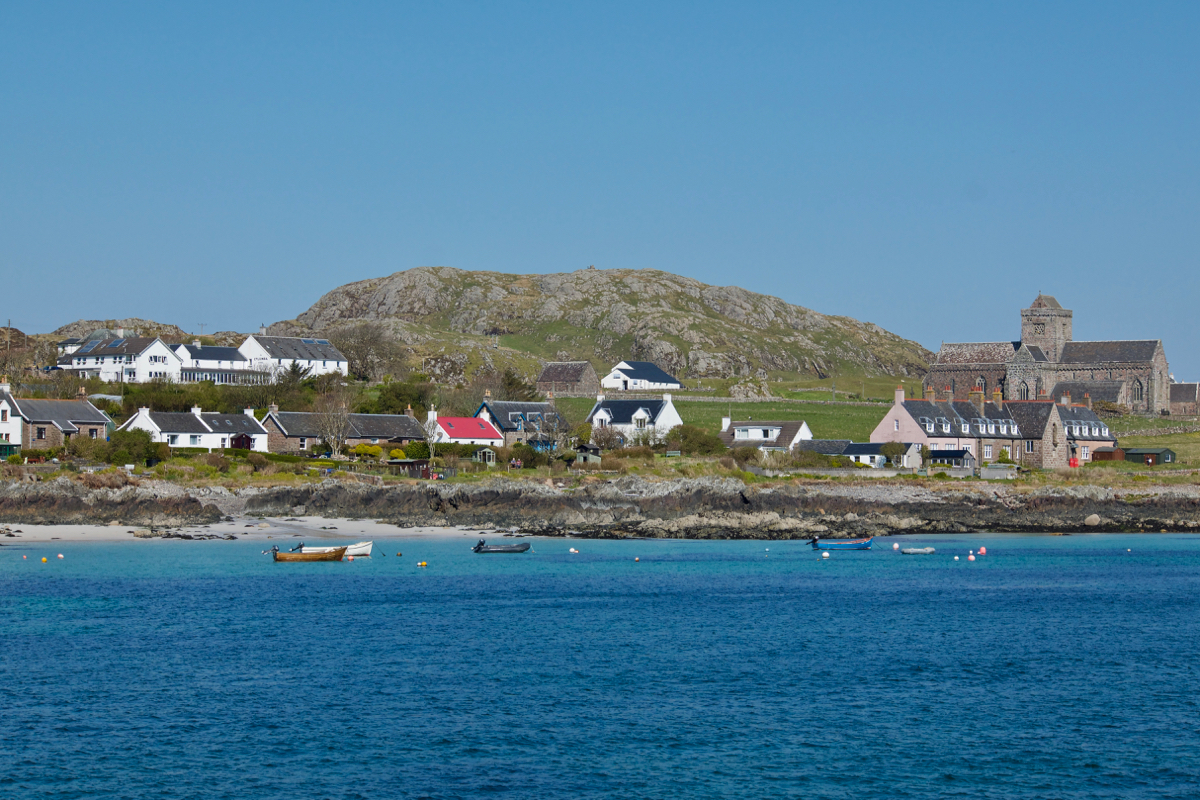
Dun I, seen from the ferry
My wish in climbing Dun I was to find Tobar na h-Aoise, which is known variously as the Well of Eternal Youth, the Well of Age, and the Pool of Healing. This is a rock-rimmed bowl of peaty water, possibly fed by springs, which lies cradled in the lee of the summit. It’s perfectly sheltered by rocky outcrops on one side, while to the north and west the ground drops away to reedy fields and the sea beyond. We dipped our hands in and took a sip: it was cold, with that soft, faintly earthy taste of Highland streams.
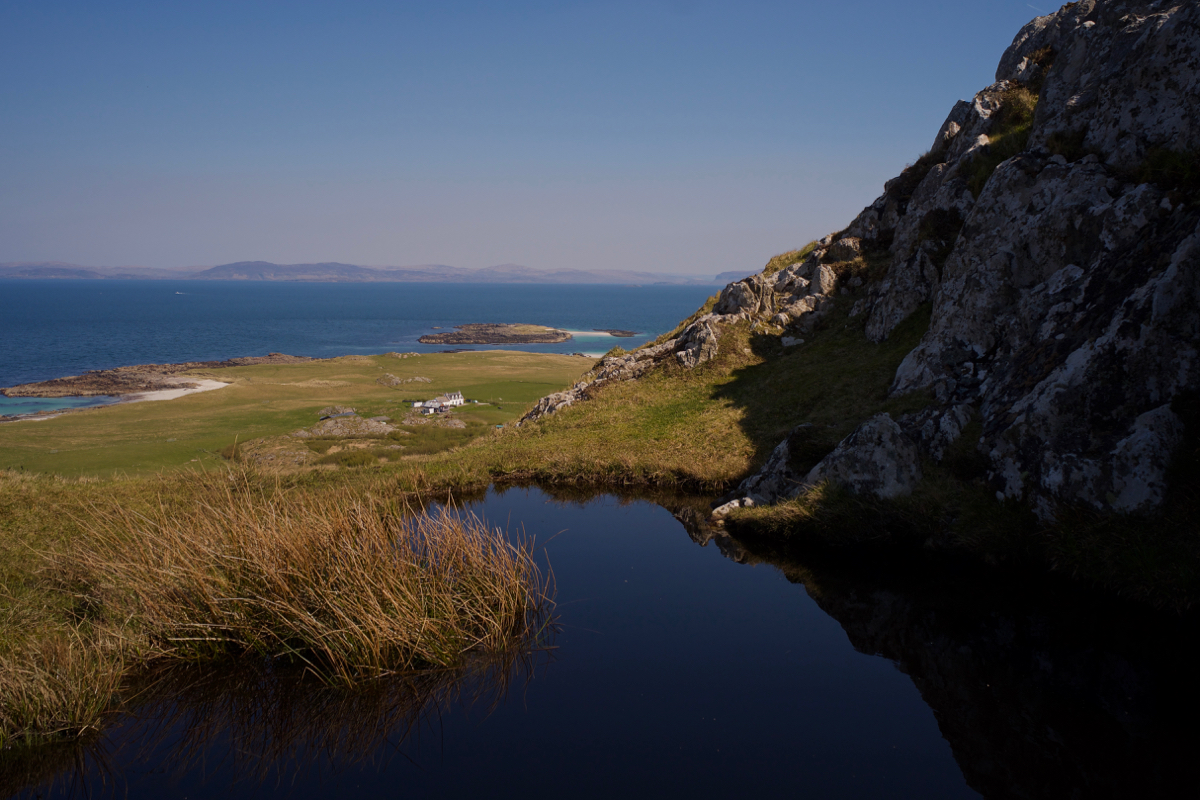
It’s entirely possible that this gorgeous little pool was revered long before the waves washed St Columba’s curragh onto the pebbly strand in 563 AD. A place of sacred ritual, perhaps, where people gathered to watch the moon reflected in its water, or the sunrise over the hills to the east. In her book, Iona – a History of the Island (1920), Marian McNeill says: ‘Here, through ages past, pilgrims of each generation have lingered at the enchanted hour of dawn, “to touch the healing water the moment the first sun-ray quickens it.”’ McNeill also explains that one of Iona’s alternative names is Innis nam Druidneach, the Isle of Druids.*
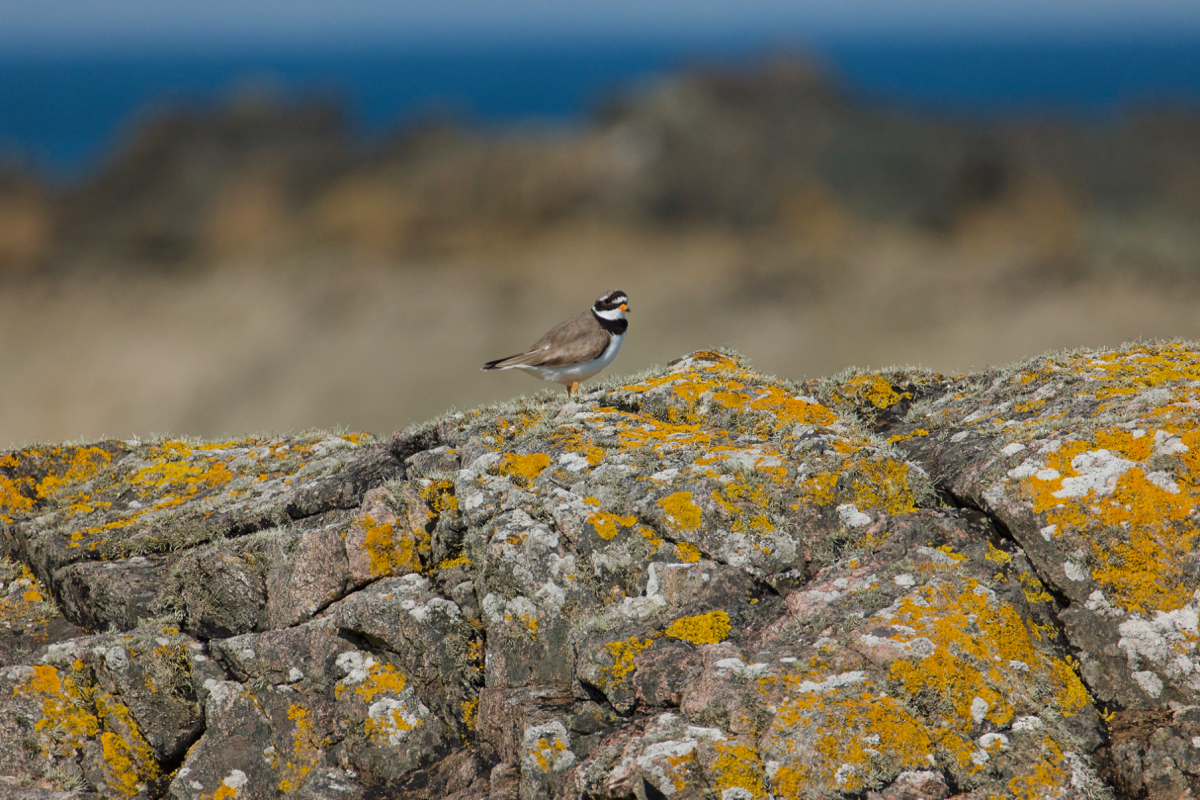
Ringed plover
The north-west side of Dun I was steeper than our upward route, but we picked our way down carefully and then headed across a reedy bog towards the northernmost beach. On the rocky foreshore, some ringed plovers were noisily defending their nest site, which could have been anywhere in the scatter of pebbles, so we moved off into the grass and walked on to the dazzling white sands of Traigh an t-Suidhe, the Beach of the Seat. Was there a seat here, at one time? I have yet to find out. Once again, I found myself thinking about St Columba and his choice of island. Was it really all about the isolation? Didn’t the beaches sway him at all?
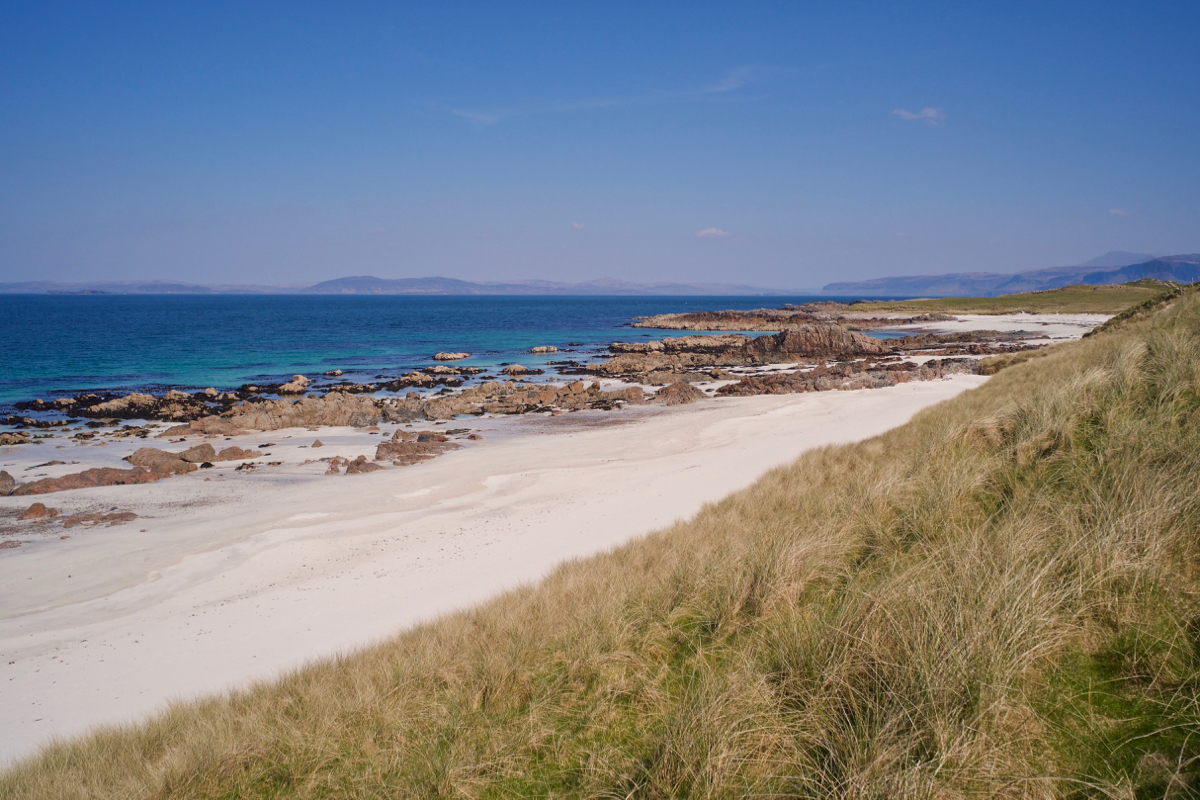
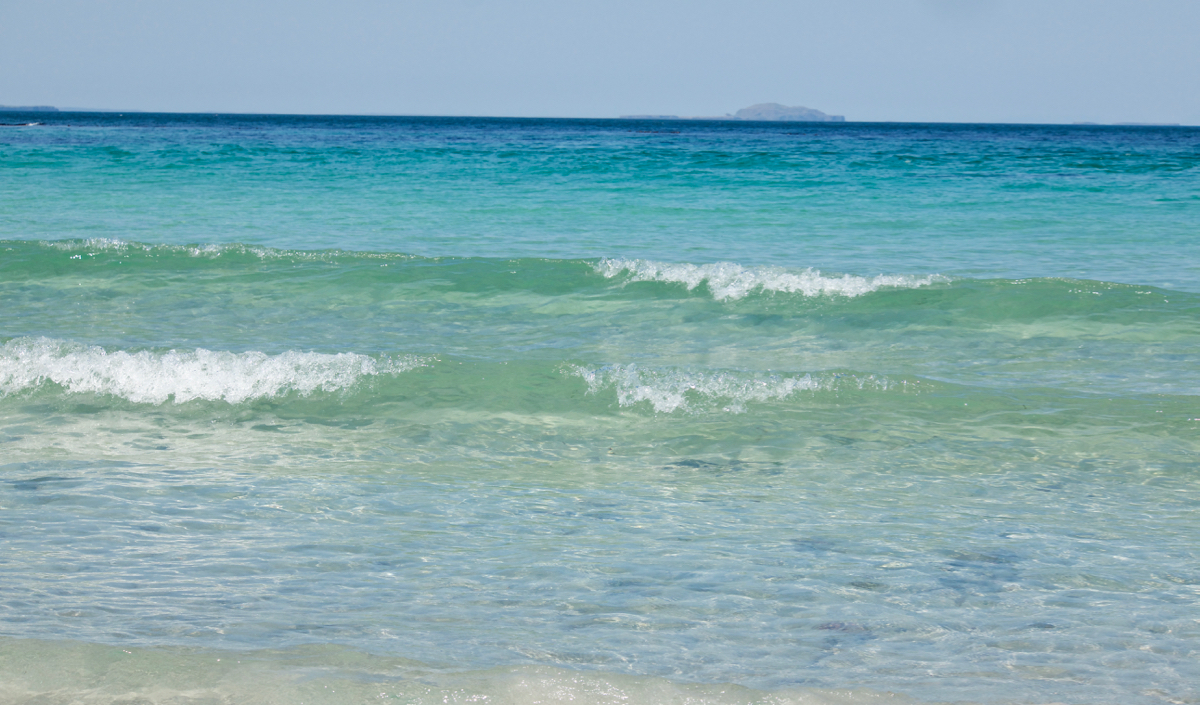
The sea looks tropical, but it was ice-cold. In his book, ‘Scottish Islands’, Hamish Haswell-Smith says: ‘The coastline has a magic and mysticism which, to me, rivals or even surpasses that of the acknowledged religious sites.’
Our leisurely walk back to the jetty was via the equally divine White Strand of the Monks, which faces east towards Mull. We’d been half-hoping that the corncrakes had arrived and might already be croaking; on previous visits, in summer, we’ve heard them calling all around, perfectly concealed in the long grass. This time we were a bit too early and the grass was still very short, although a shop owner told us that a newly-arrived corncrake had been heard the previous morning.
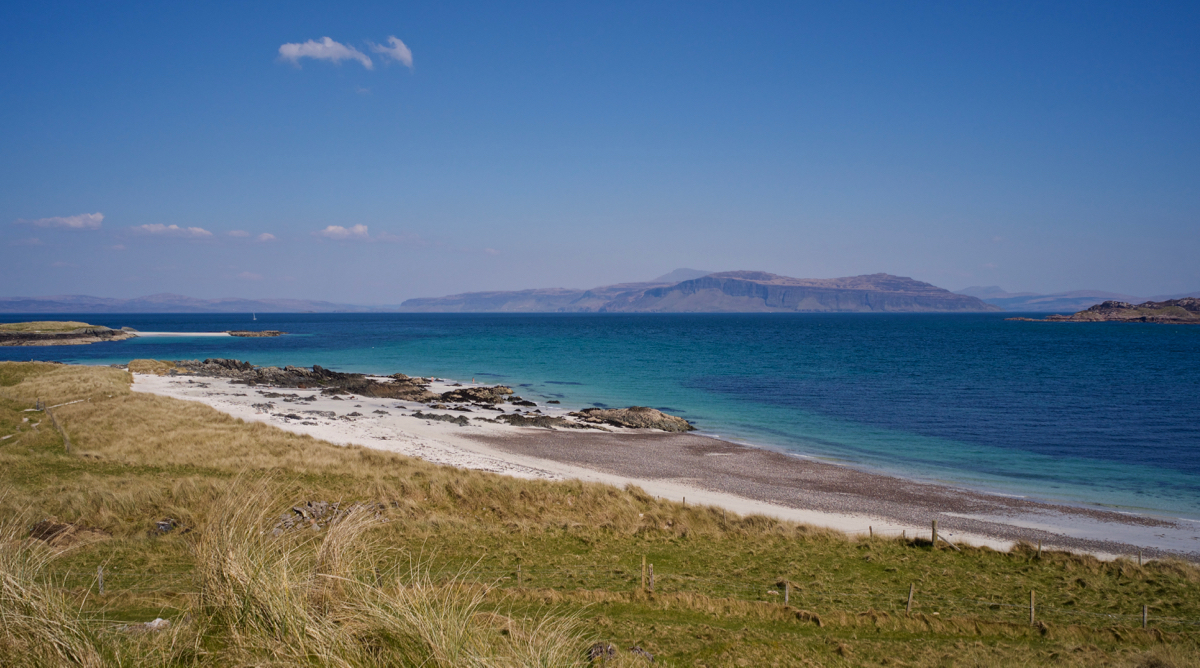
Traigh Ban nam Monach (The White Strand of the Monks)
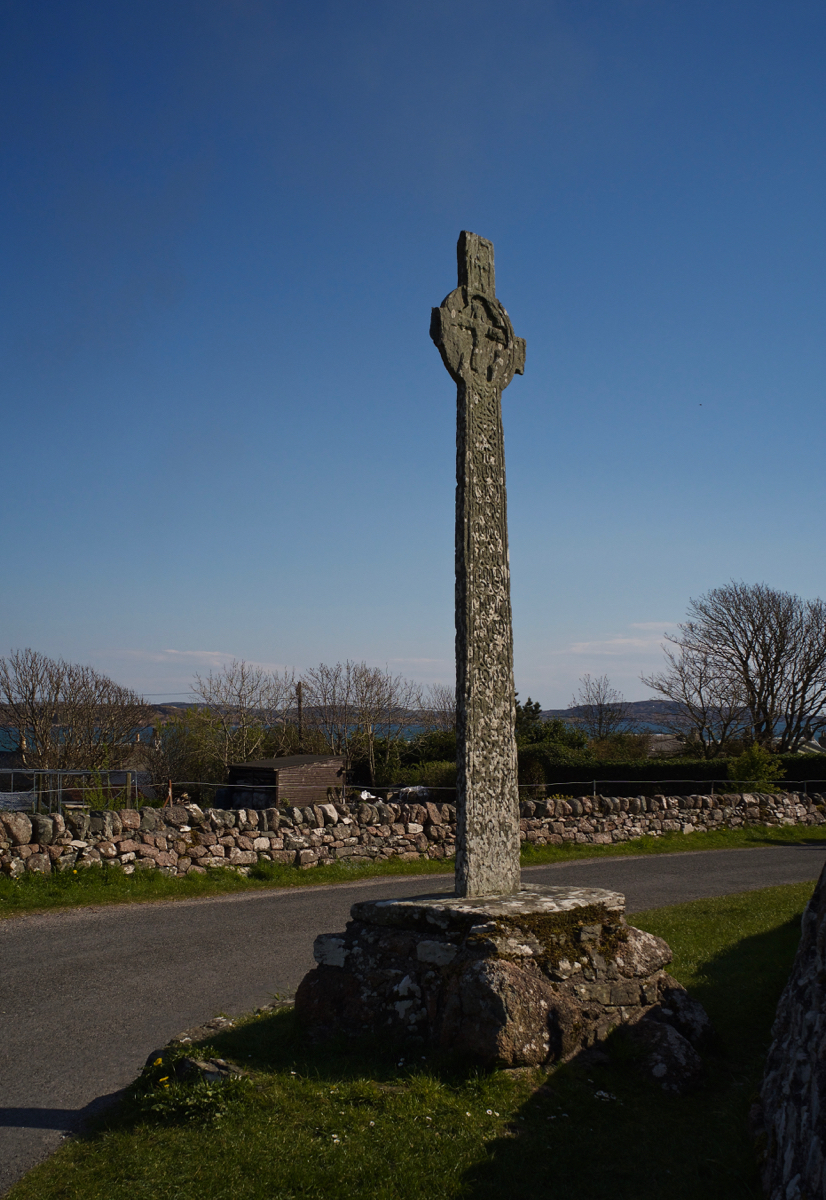
The 15th century Maclean’s Cross stands at a point where the Street of the Dead meets another track leading up from Port Ronain. Pilgrims walking to the Abbey would have stopped here to pray.
An unexpected road closure on Mull meant that we had to wait for the last ferry to Oban; dawdling in the lanes around Fionnphort, we noticed big flocks of golden plovers, some 50 or so strong, settling in the sheep fields to feed and then rising again and wheeling round before coming down, perfectly synchronised, just a bit further off. Their calls are plaintive yet insistent, and I can see why they have given rise to legends about the ‘Seven Whistlers’ – six birds that fly at night, invisible and restless, perpetually seeking a seventh bird that is never found.
Our first swallows were seen here, too, and in the days since our visit they’ve arrived here in Lunga, a very welcome sight after many weeks of anticipation.
Reference and reading:
- Canmore: Tobar na h-Aoise
- Walkhighlands: Iona’s north end
- Florence Marian McNeill, Iona: A History of the Island with Descriptive Notes (1920)
- Hamish Haswell-Smith, Scottish Islands (1996)
- Isle of Iona website
*Gilbert Markus, Research Associate in the School of Humanities (Celtic and Gaelic) at the University of Glasgow, tells me that there is no hint of the Innis nam Druidneach name for Iona before the 20th century. However, he adds that near the medieval harbour is a place called Cladh nan Druineach, which means ‘burial ground of the artists/craftsmen/embroiderers/seamstresses’. He explains that this place-name is often used of women, especially women associated with monasteries, perhaps whose needlework skills were valued as a contribution to the artwork of the church.
Images copyright Colin & Jo Woolf



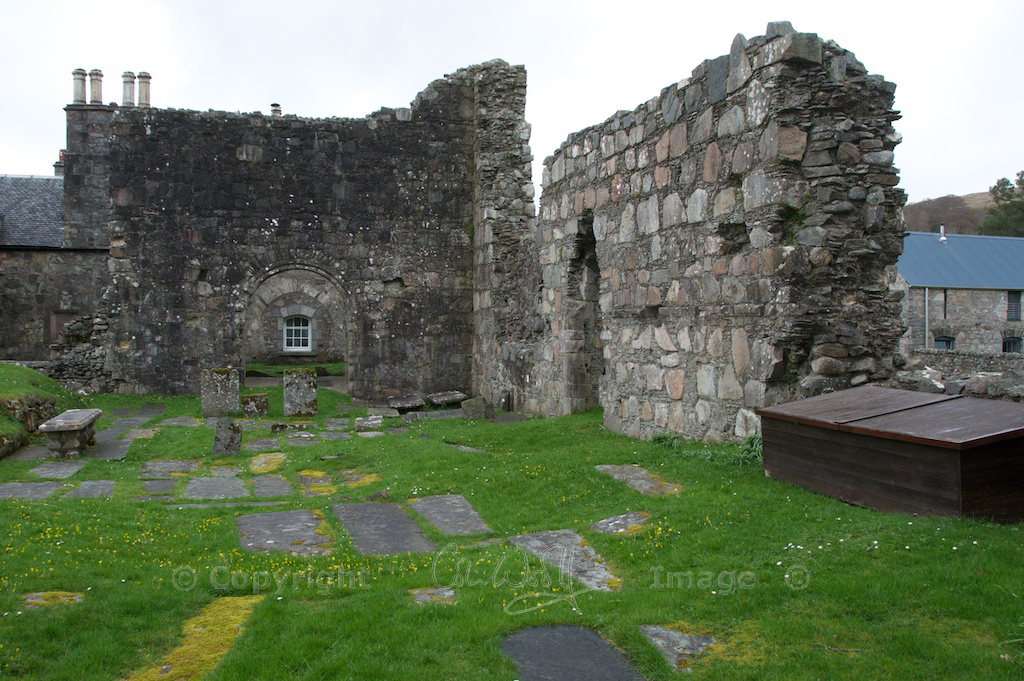
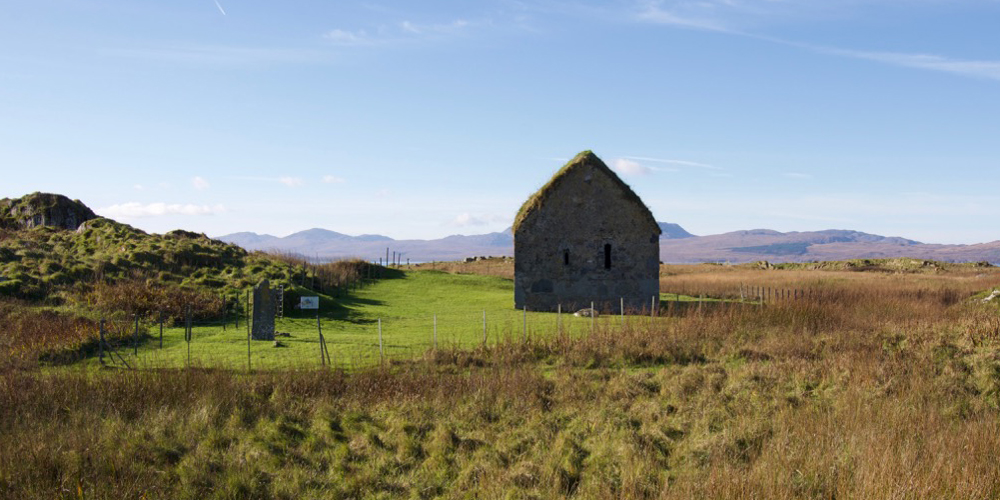
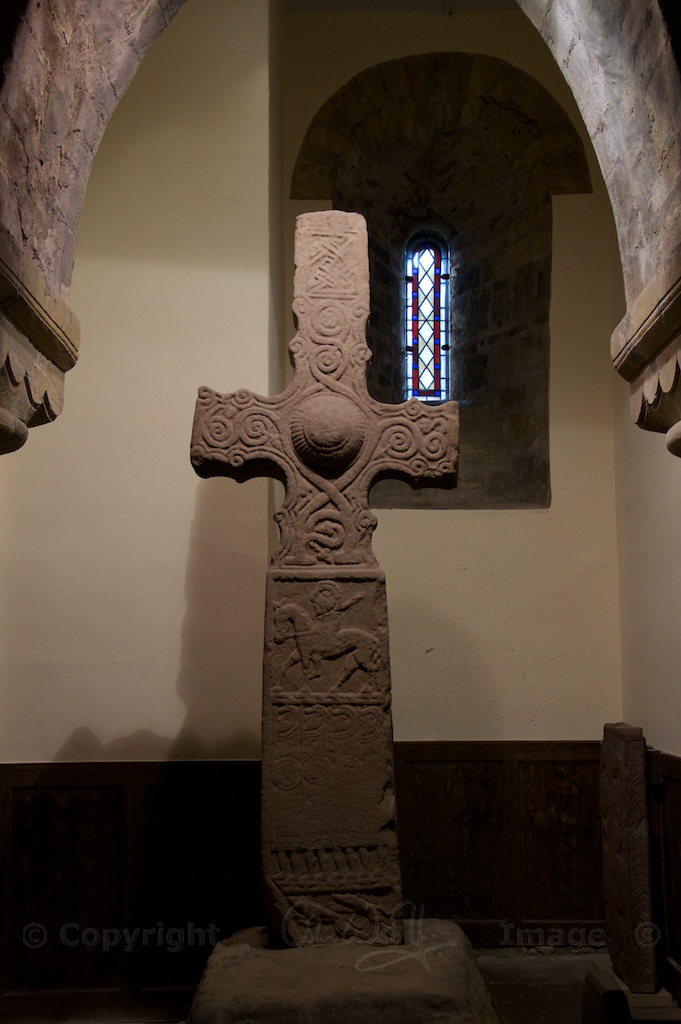
12 Comments
Linda George
I always love reading your travels, the narrative draws me in and I’m almost there! We have been visiting the west coast on a very regular basis for 50 years and I can picture it all in my mind, thank you!
Jo Woolf
Thank you so much, Linda! The west coast is a very special place and I’m glad to hear you love it too.
Jolene Nevin Neri
Lovely read with my tea. I so enjoy your posts. I feel I have read them since I was a child! Will read all your island pieces today. I have found recently my father’s side were MacDonald from Eigg and MacCleans from ‘not yet known’. Oneday I will visit. Thank you for sharing your beautiful experiences and writing. Best, Jolene
Jo Woolf
Thank you very much, Jolene! Guess I’ve been writing posts on The Hazel Tree since about 2011 so that’s entirely possible, haha! It’s really nice to know how much you enjoy them. It does sound as if you have a strong west-coast heritage and I really hope you can visit soon. You would love it. Thanks again for your kind words.
Bob Hay
Famous quote from the great Dr Samuel Johnson Jo when he and Boswell visited the island.
(The sublimity of his words brought the equally famous Sir Joshua Reynolds to tears.)
‘Far from me and from my friends, be such frigid philosophy as may conduct us indifferent and unmoved over any ground which has been dignified by wisdom, bravery, or virtue. That man is little to be envied, whose patriotism would not gain force upon the plain of Marathon, or whose piety would not grow warmer among the ruins of Iona’.
Jo Woolf
Thank you, Bob! He was obviously very moved by the place. It must have been a bit of a trek then (and I’d love to have seen it in his day).
davidoakesimages
Serenity you said…. it is many years since we last stepped off the ferry on Iona, but that feeling of serenity still lingers in the memories of those visits. Scotland has many lonely islands but Iona always seemed that bit different – special. Another good read, so thanks again. My internal RAM is full, and access seems very random, so needs the occasional ‘code’ to unlock these memories. 🙂
Jo Woolf
Thank you, David! I’m very glad it stirred some memories. Iona has a special place in my heart too.
Karen Brooks
Jo, thank you so much for each and every post of these special places you explore. I started reading your posts many years ago never dreaming I would ever make it to Scotland. well, I did, for 3 weeks in 2021. Iona is a must for my next visit. Until then, I will explore through your posts.
Jo Woolf
You are so welcome, Karen, and it’s wonderful to know how much you’ve loved visiting Scotland! If my posts have contributed to that, I think that’s amazing! I do hope that you can come back, and Iona will be waiting for you. Thank you again.
Richard miles
Hello Jo,sorry for being late in replying to your blog.Your photos of Iona are really good and coupled with your descriptions and information about Iona very informative and convey the atmosphere of the island.When I was at school in the sixties we had an interesting lesson about St Columba which I found fascinating especially the reasons why he left Ireland,partly due to family strife,not just spreading the evangelical word.On my travels i have also noticed that linnets are often attracted to stone ruins.Good to hear that corncrakes still visit our shores.
Jo Woolf
Hi Richard, no need to apologise at all, and thank you for your comment! I’m glad you enjoyed the post. Yes, the personal story behind St Columba’s voyage is a very interesting one. He is said to have arrived at quite a few places on the west coast before he settled on Iona, reputedly chosen because he could no longer see the shore of Ireland. That’s very interesting about linnets being attracted to stone walls – we’ve not noticed that before, but they did seem to be happy there (we couldn’t decide if they were nesting or not). We’ve been lucky enough to see and hear corncrakes on Iona in past years – once when the grass was low enough for them to be seen calling in the open, and another time when they seemed to be all around us, but frustratingly invisible! It’s an amazing noise. I’m glad there are some undisturbed places where they can still return. Incidentally we have heard the cuckoo in the last week, here in Lunga. All good wishes, Jo